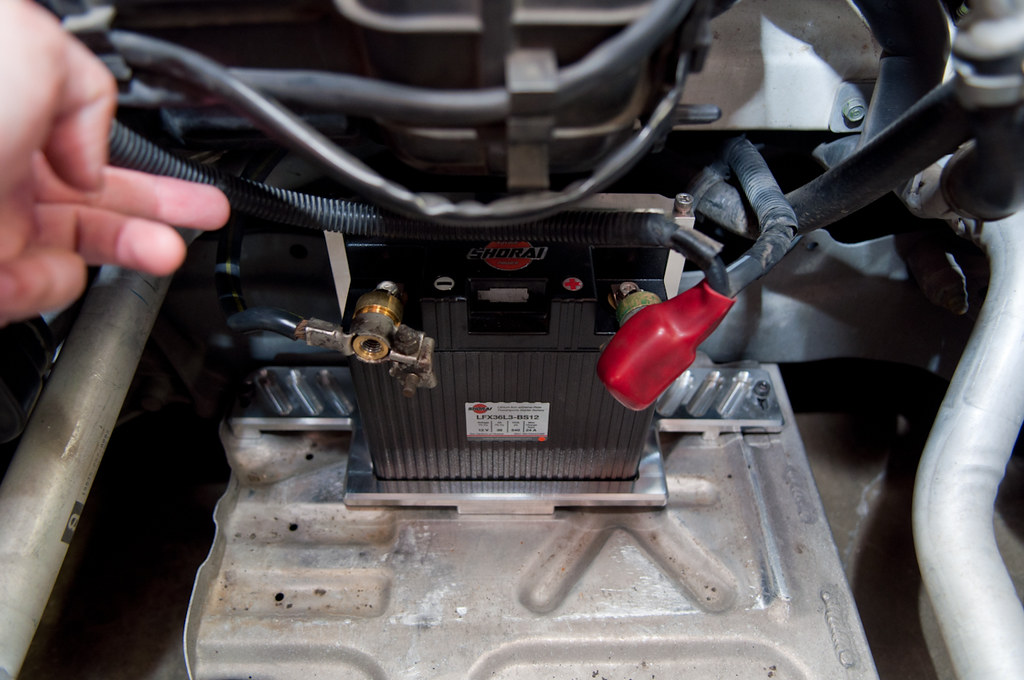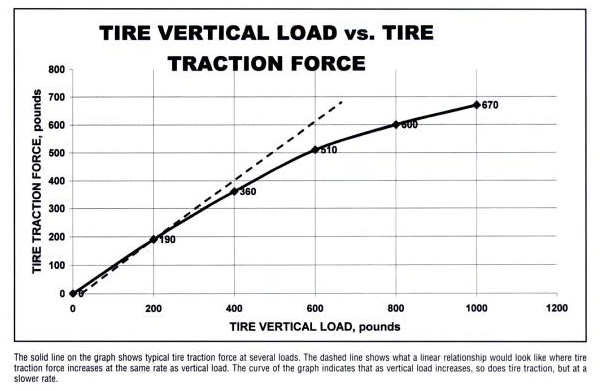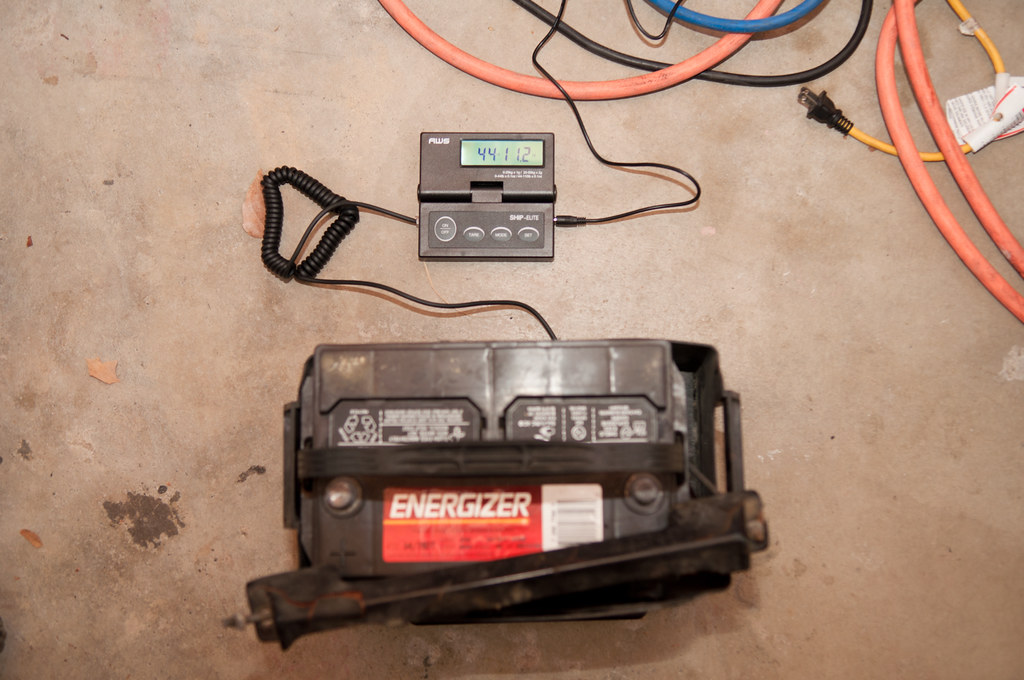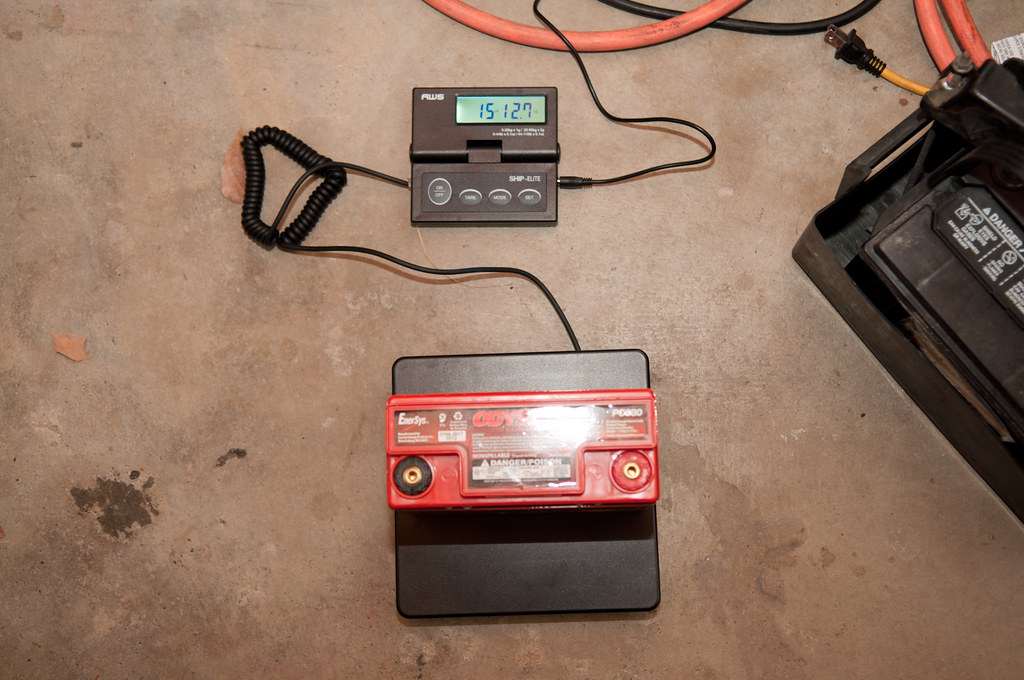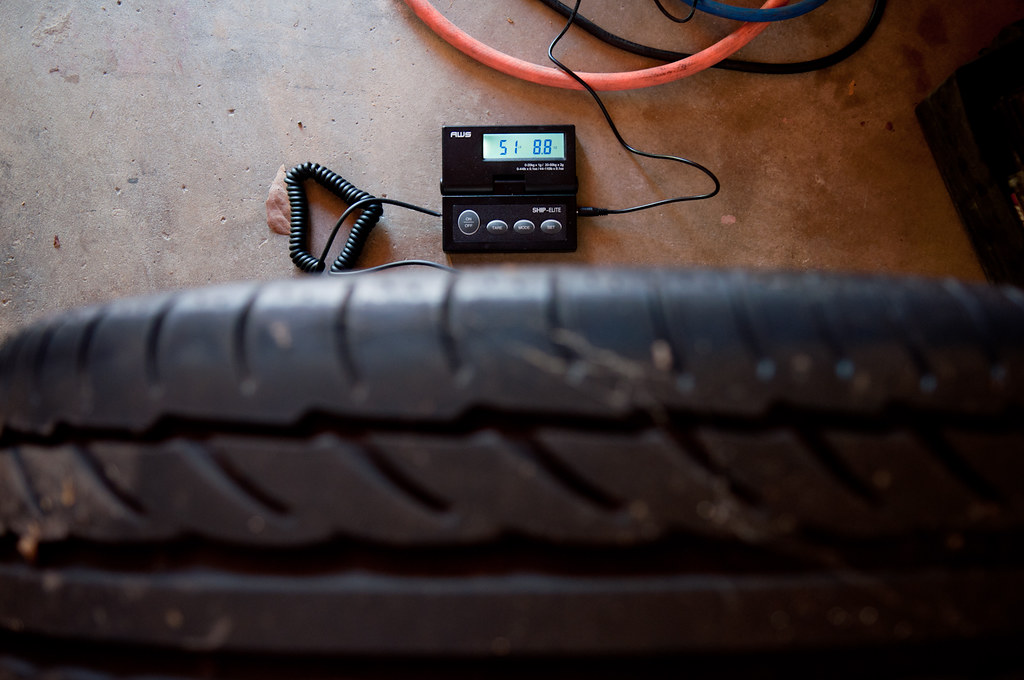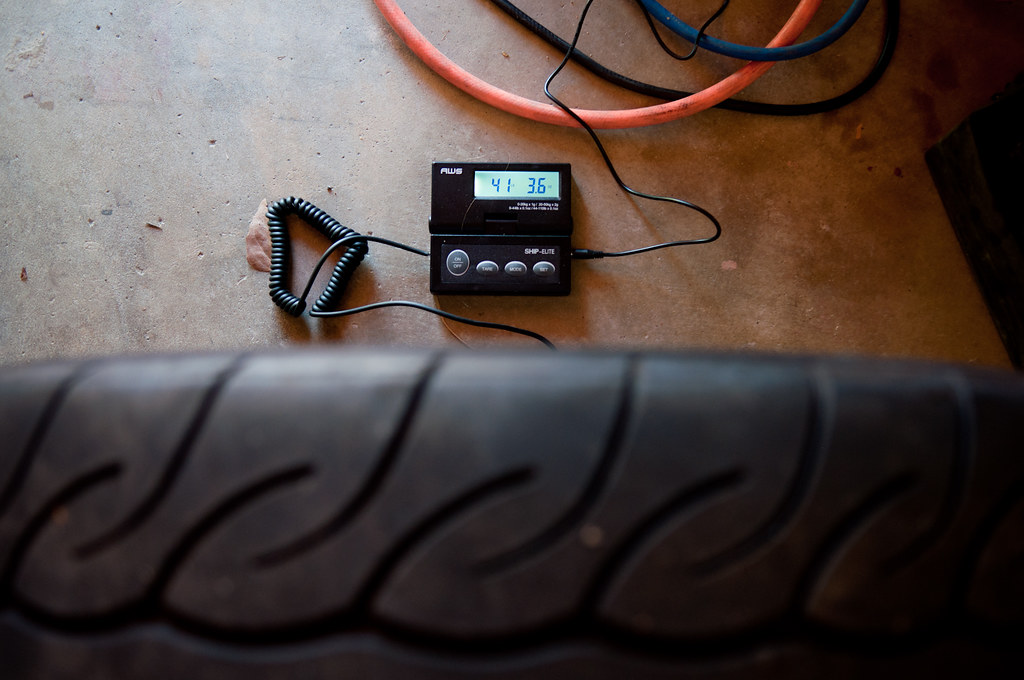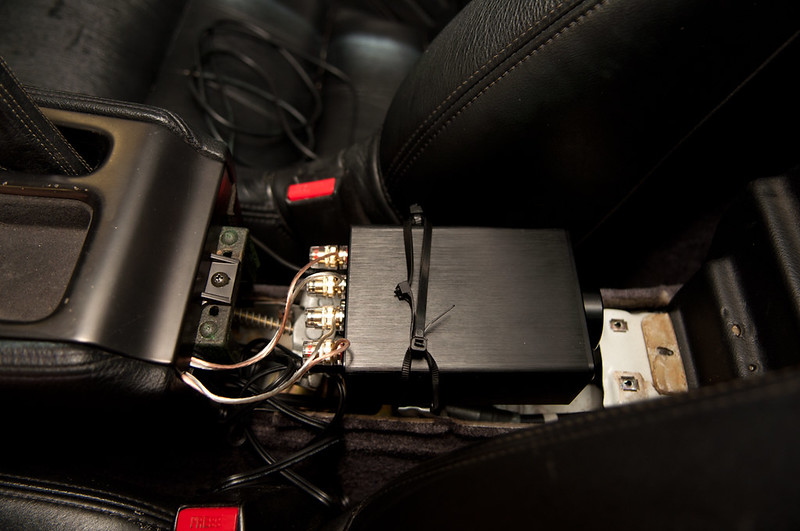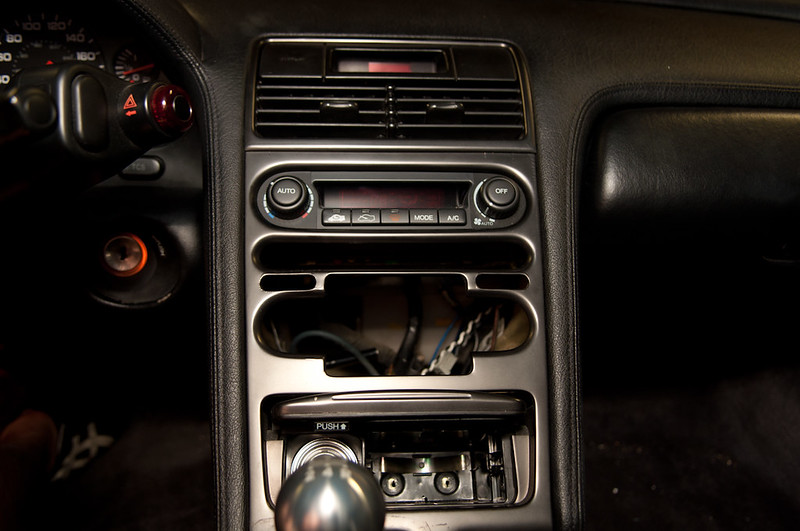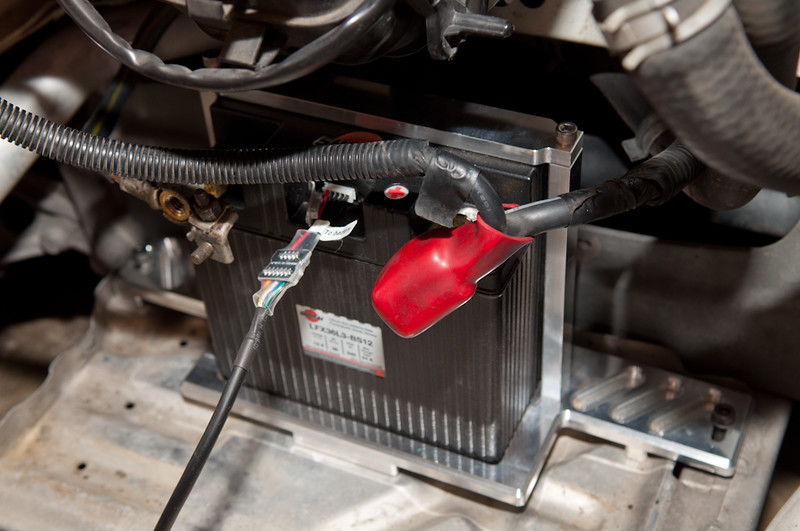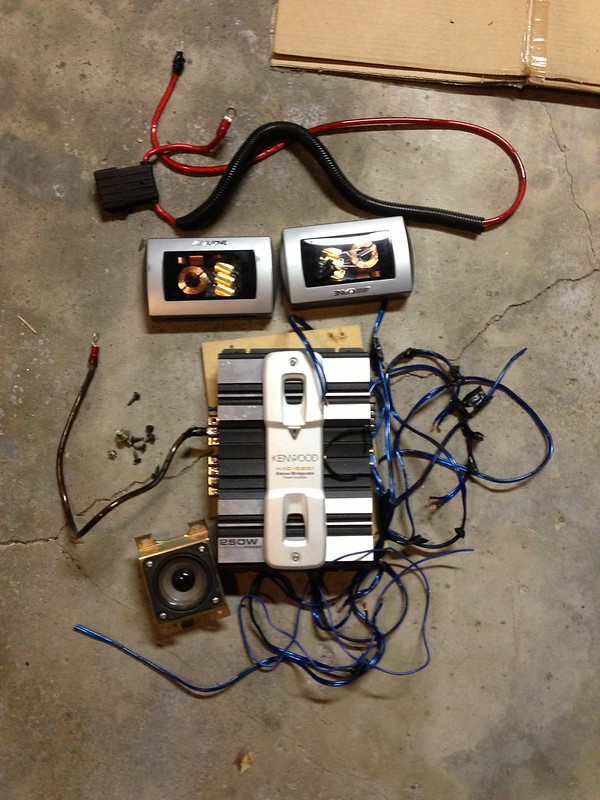I suppose it's due time that I got into this thread, I'm a huge proponent of "lighter is better". In fact, I even bought
www.lighterisbetter.com a few months ago (there's nothing on it right now).
I've done a good amount of weight reduction on the car, although unfortunately I haven't documented the weight savings. I'll probably end up throwing all of the stuff I removed in the trunk and driving to a scale and do a before and after.
My most recent weight reduction project was installing a mini-amp wired directly to the speakers, so I can plug my phone directly into the amp. Removed the radio, CD changer and everything associated with it. I'm not done fully installing it because I was rushing to get it done last week before I headed on a road trip (NEEDED to have an AUX in!). I'm planning on installing it into the armrest compartment.
I plan on covering the hole with a sheet of carbon fiber.
I'm not a vendor yet, but will be when I release our battery trays. My buddy and I own and operate a CNC mill and are coming out with a line of machined aluminum battery trays to hold the Shorai 36AH batteries. They'll be available next month.
I'm an authorized dealer of Shorai batteries. We don't stock them at the moment, but have access to their pricing, which I am more than willing to pass the discount on to fellow NSXers. I mainly wanted to become a Shorai dealer so we could build in the cost for the battery package, so it wouldn't be outrageously expensive, as the MSRP of the battery itself is pretty high.



